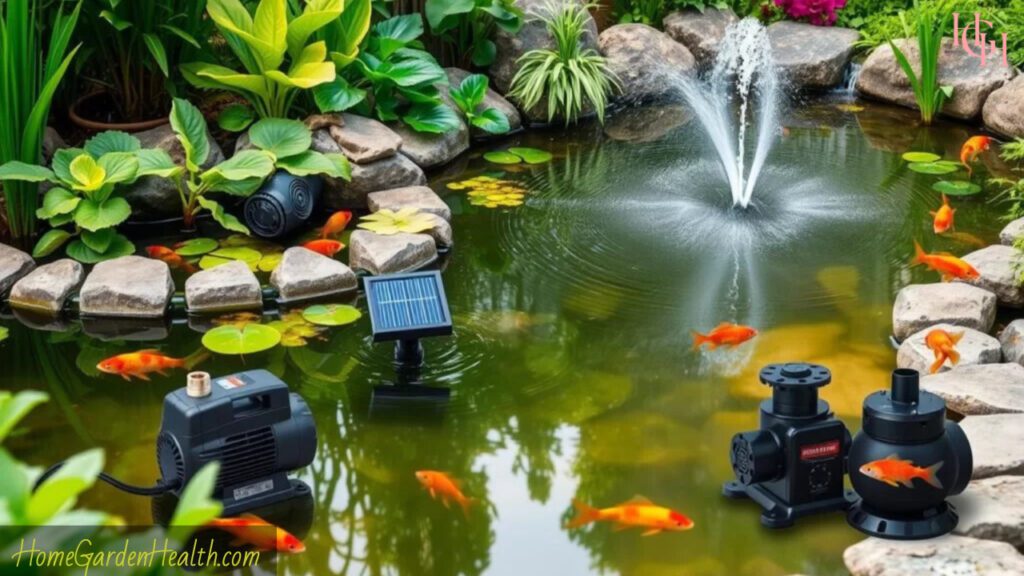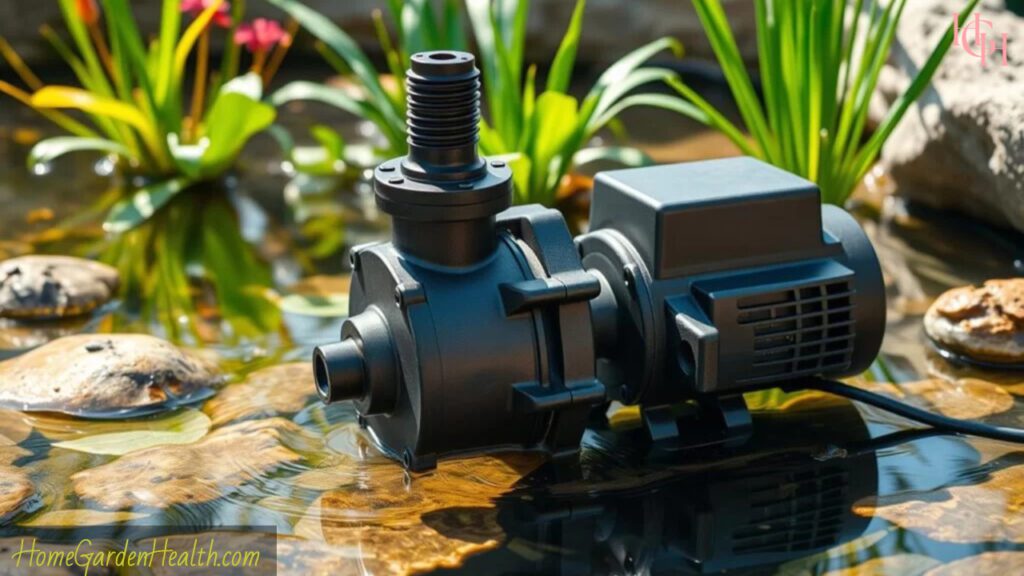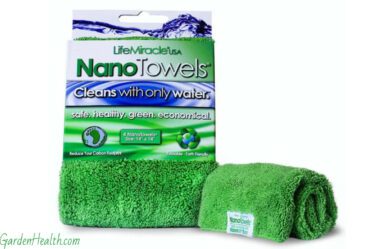
Choosing the right pond pump is key to a vibrant, healthy pond. It keeps the water clear and moves it well. We’ll look at top-rated pond pumps that improve our pond’s look and function. Let’s find the perfect pump for a great pond experience.
Key Takeaways
- Choosing the right pond pump enhances water clarity and circulation.
- A top rated pond pump contributes to a beautiful and healthy aquatic environment.
- Our comprehensive pond pump reviews help in understanding various options.
- Performance and efficiency are key factors to consider in selection.
- Investing in quality pays off in the long run for maintenance and aesthetics.
Understanding the Importance of a Quality Pond Pump
Quality pond pumps are key to a healthy pond. They make sure water moves well, preventing it from becoming still. Still water can cause algae to grow and oxygen levels to drop, harming fish and plants.
A good pond pump filters out dirt and bad stuff from the water. This makes the water clear and pretty. It also helps aquatic life thrive, keeping the pond healthy.
Choosing a reliable pond pump changes how the water looks and feels. A good pump keeps the pond balanced, beautiful, and full of life.
| Aspect | Quality Pond Pump | Poor-Quality Pond Pump |
|---|---|---|
| Water Circulation | Maintains optimal flow | May cause stagnation |
| Filtration Efficiency | Effectively removes debris | Leaves particles in water |
| Longevity | Durable and reliable | Short lifespan |
| Energy Efficiency | Lower operational costs | Higher electricity consumption |
Key Features to Look for in Pond Pumps
When looking for the perfect pond pump, knowing the key features is crucial. Choosing a high performance pond pump means paying attention to certain qualities. These qualities boost efficiency and make the pump last longer.
- Flow Rate: The flow rate shows how much water the pump moves over time. A high flow rate is key for a healthy and beautiful pond.
- Energy Efficiency: An energy efficient pump cuts down on costs and is better for the environment. Choose pumps with high energy ratings for lasting satisfaction.
- Durability: The materials used in the pump’s construction affect its life span. Pick pumps made with weather-resistant and quality materials to last longer.
- Noise Levels: A quiet pump makes the pond more enjoyable. Many top pond pumps are silent, not disturbing the peaceful setting.
- Ease of Maintenance: Pumps that are easy to clean and maintain work better and last longer. This reduces the risk of problems and makes upkeep easier.
By focusing on these key features, we can find a pump that fits our needs and improves our pond. Understanding these elements helps us make smart choices. This leads to a healthy and beautiful pond.
| Feature | Importance |
|---|---|
| Flow Rate | Essential for adequate water circulation |
| Energy Efficiency | Saves on electricity costs |
| Durability | Ensures long-term performance |
| Noise Levels | Maintains a serene environment |
| Ease of Maintenance | Reduces downtime and effort involved |
Benefits of Investing in a High Performance Pond Pump
Buying a high-performance pond pump has many perks for our water features. It boosts both their function and looks. Let’s look at how it helps with better water flow and making our ponds look great.
Enhanced Water Circulation
Good water flow is key for a healthy pond. A high-performance pump raises oxygen levels, helping plants and fish. This means nutrients move around better, cutting down algae and keeping water fresh.
This leads to a pond full of life and color. It’s a place where plants and animals thrive together.
Improved Aesthetic Appeal
Looks matter too. A high-performance pump makes our ponds look stunning with features like waterfalls and fountains. These add to the calm vibe and draw in wildlife.
| Benefit | Impact on Pond |
|---|---|
| Enhanced Oxygenation | Supports aquatic life |
| Efficient Nutrient Distribution | Prevents algae blooms |
| Attractive Water Features | Increases visual appeal |
| Wildlife Attraction | Enhances biodiversity |
Types of Pond Pumps: What’s Right for You?
Choosing the right pond pump is key to a healthy and beautiful pond. We’ll look at submersible and external pond pumps. Each has its own benefits and best uses, helping you pick the right one.
Submersible Pond Pumps
Submersible pond pumps work underwater. They offer many advantages:
- Ease of Installation: They’re easy to set up because they go right in the pond.
- Space-saving Design: They don’t take up extra space above the water, perfect for small ponds.
- Reduced Noise Levels: Being underwater, they’re quieter than pumps outside the pond.
These pumps are great for small ponds or water features where looks and space are important. They work well for fountains, waterfalls, and small fish ponds.
External Pond Pumps
External pond pumps work outside the pond. They have their own benefits:
- Increased Power: They can handle more water flow, ideal for big ponds.
- Easier Maintenance: Being out of the water makes them easier to clean and maintain.
- Versatile Installation Options: They can be placed in many spots, offering flexibility in setup.
These pumps are best for large ponds that need a lot of power and circulation. They help with better filtration and aeration, keeping the water healthy.

| Feature | Submersible Pond Pumps | External Pond Pumps |
|---|---|---|
| Installation | Simple, direct placement in water | Requires space and external plumbing |
| Noise Level | Quieter operation | May be noisier |
| Maintenance | More difficult to access | Easy access and servicing |
| Flow Rate | Moderate | Higher flow rates available |
| Best Use | Smaller ponds and water features | Larger ponds requiring robust power |
Knowing about these two types of pond pumps helps us choose the best one for our pond. Whether we pick submersible or external pumps, both are key to a healthy pond.
Best Pond Pump for Small Ponds
Choosing the right pond pump for small ponds is important. We must consider size, power, and flow rate for good water circulation. There are many small pond pump options, making it both fun and a bit hard to pick.
What to Consider
When picking a pond pump, keep these points in mind:
- Size: Make sure the pump fits in your pond without taking up too much space.
- Power: Look at how much energy it uses and what it gives back in power for efficiency.
- Flow Rate: Pick a pump that can move the right amount of water in your pond.
Top Choices on the Market
Here are some top small pond pump options:
| Model | Flow Rate (GPH) | Power (W) | Price |
|---|---|---|---|
| Pondmaster 24 | 300 | 25 | $79.99 |
| Little Giant 5-MSP | 500 | 50 | $99.99 |
| Tetra Pond PP450 | 450 | 40 | $69.99 |
| EcoPlus 396 | 396 | 32 | $89.99 |
Top Rated Pond Pumps: Our Expert Reviews
Choosing the best pond pump means looking at how well they perform and what users say. We’ve done a deep dive into these factors to help you pick the right one for your pond.
Performance Comparison of Top Models
It’s important to know how different pumps stack up against each other. Below, we’ve listed key details of top models from our reviews.
| Pump Model | Flow Rate (GPH) | Power Consumption (W) | Warranty (Years) |
|---|---|---|---|
| Laguna MaxFlo | 5000 | 75 | 3 |
| PondMaster 1200 | 1200 | 50 | 2 |
| Little Giant 566201 | 2000 | 85 | 3 |
| Alita AL-60 | 3000 | 44 | 2 |
User Feedback and Ratings
What real people say about pond pumps is super important. Here’s a look at what users think about different models:
- Laguna MaxFlo: People like its strong flow and reliability, but it’s a bit pricey.
- PondMaster 1200: It’s affordable and uses less power, but some say it doesn’t last as long.
- Little Giant 566201: Many say it’s built to last, but some find it too loud.
- Alita AL-60: It’s energy-saving, but some users think it doesn’t move water as well as others.
Energy Efficient Pond Pumps: Benefits and Options
Choosing an energy efficient pond pump has many benefits. It makes our water features work better and helps us use less energy. These pumps use less power, which lowers our energy bills. Using less energy saves us money and cuts down on pollution, helping our wallets and the planet.
Energy efficiency is good for more than just our wallets. It lets us live more comfortably and sustainably. Our ponds stay healthy and vibrant. These pumps use the latest technology to work well without using a lot of power. This gives pond lovers peace of mind.
Here are some popular options in the category of energy efficient pond pumps:
| Pond Pump Model | Power Consumption (Watts) | Max Flow Rate (GPH) | Energy Efficiency Rating |
|---|---|---|---|
| Ecosavvy 500 | 45 | 500 | A++ |
| EcoPump 800 | 60 | 800 | A+ |
| BlueEco Pro | 75 | 900 | A+++ |
| GreenFlow 300 | 30 | 300 | A |
Looking at these models helps us make smart choices. By picking an energy efficient pond pump, we meet our needs and help the environment. This choice supports our use today and helps our planet for the future.
Durable Pond Pumps: Longevity and Reliability
Choosing the right pond pump is key to its long life. The pump’s durability depends a lot on the materials used. Knowing about these materials helps us pick the best for our ponds.
Materials that Stand the Test of Time
Pond pumps are made from different materials, each adding to their life span. Let’s look at some common ones:
- Thermoplastics: These are strong yet light, fighting corrosion well. A pump made of thermoplastic works well over time without losing efficiency.
- Stainless Steel: Known for its strength, stainless steel pumps are very durable. They don’t rust or wear out easily, making them perfect for ponds.
- Ceramics: Some top pumps use ceramic parts. Ceramics last a long time against damage, keeping the pump working well.

Knowing about these materials helps us pick a pond pump that lasts long and works well. It lets us make and keep beautiful ponds.
| Material | Durability | Corrosion Resistance | Weight |
|---|---|---|---|
| Thermoplastic | Good | Excellent | Lightweight |
| Stainless Steel | Excellent | Very Good | Moderate |
| Ceramics | Excellent | Good | Lightweight |
Affordable Pond Pump Options for Every Budget
Finding an affordable pond pump doesn’t have to be hard. Many options are both reliable and affordable, helping our ponds do well without costing too much. Let’s explore some great choices that offer great value and quality.
Cost-Effective Solutions Without Compromising Quality
We think buying a pond pump should be easy on the wallet. Here are some top picks that show the best mix of affordability and quality:
- Hayward PowerFlo: This pump is known for its long life and efficiency. It’s great for small to medium ponds.
- NorthEast Products Pond Pump: A budget-friendly choice that performs well and uses less energy.
- Pondmaster Magnetic Drive Pump: This pump is small, affordable, and has a strong flow for smaller ponds.
For a clear look at features and prices, check out the table below:
| Pond Pump Model | Flow Rate (GPH) | Energy Efficiency (W) | Price Range |
|---|---|---|---|
| Hayward PowerFlo | 550 | 50 | $150 – $200 |
| NorthEast Products Pond Pump | 400 | 30 | $100 – $150 |
| Pondmaster Magnetic Drive Pump | 300 | 20 | $80 – $120 |
With these affordable pond pumps, we can keep our ponds beautiful and healthy without spending too much. Budget-friendly options give our ponds the support they need to flourish all year.
How to Size Your Pond Pump Correctly
When sizing a pond pump, it’s key to know your pond’s size and its water features. We must figure out the right pump capacity for good performance and a healthy pond. Here’s a simple guide to help us do this.
First, we need to find out the pond’s volume. We can do this with a formula:
Volume (in gallons) = Length (ft) x Width (ft) x Average Depth (ft) x 7.48
After figuring out the pond’s volume, we look at the flow rate needed. It’s advised to have at least one full pond turnover every hour. For instance, a 1,000-gallon pond needs a pump that can move at least 1,000 gallons per hour (GPH).
Don’t forget about water features like waterfalls or fountains. They might need more flow. Here are some tips:
- Waterfalls: Add 200 GPH for every inch of waterfall width.
- Fountains: Pick a pump that can produce at least 50% of the fountain’s height in GPH.
We can wrap up the key points for picking the right pond pump with a table:
| Pond Size (Gallons) | Recommended Pump Capacity (GPH) | Additional for Waterfalls (GPH) | Additional for Fountains (GPH) |
|---|---|---|---|
| 1,000 | 1,000 | 200 (for 1 inch width) | 500 (for 10 inches height) |
| 2,000 | 2,000 | 400 (for 1 inch width) | 1,000 (for 20 inches height) |
| 3,000 | 3,000 | 600 (for 1 inch width) | 1,500 (for 30 inches height) |
By doing careful math, we can pick the perfect pond pump size. This ensures our water features work well and keeps our pond healthy. Choosing the right pump capacity is key for a great pond.
Common Mistakes to Avoid When Choosing a Pond Pump
Choosing the right pond pump can be tough, with so many options out there. We might make mistakes that waste time and money. Knowing the common errors can help us make better choices and save money.
Underestimating Pump Requirements
One big mistake is underestimating what pump we need. Many think a small pump will do, without thinking about the pond’s size and water flow. This can cause poor circulation, hurting water quality and pond life. To avoid this, we should measure our pond and figure out the flow rate we need for a good pump.
Ignoring Energy Efficiency Ratings
Another mistake is ignoring energy efficiency when picking pond pumps. A high-power pump might look good at first but can increase electricity bills. Choosing a pump with a good energy rating cuts costs and helps the environment. It’s important to look at these ratings to avoid unexpected bills.
Before buying, check out this table that shows the differences in pumps by energy efficiency and output.
| Pump Model | Flow Rate (GPH) | Energy Efficiency Rating |
|---|---|---|
| PondMaster Super Efficient | 800 | A |
| EcoPlus Water Pump | 1,000 | A+ |
| Little Giant Water Wizard | 1,200 | B |
Maintenance Tips for Your Pond Pump
Looking after our pond pump right makes it work better and last longer. It’s key to keep up with regular maintenance to avoid big problems. Here are some important tips for good upkeep.
Regular Checks and Cleaning
Checking our pond pump often is a good habit. This means:
- Looking at power cords and connections for damage.
- Cleaning filters and removing debris that slows it down.
- Listening for strange noises that could mean trouble.
Cleaning the pump every month keeps it running well. Always follow the maker’s instructions when cleaning it.
Signs Your Pond Pump Needs Attention
Knowing when our pond pump isn’t working right is key. Look out for these signs:
- Less water flow or pressure in the pond.
- It overheating or the breaker tripping often.
- Strange noises like grinding or humming.
If we see these problems, we should fix them fast. Quick maintenance saves us from expensive repairs later.

Comparing Top Brands in Pond Pumps
Choosing the right pond pump is key. Looking at top brands pond pumps helps a lot. Each brand has its own special features and reliability. This makes comparing them important for making good choices.
Market Leaders and Their Innovations
Some brands lead the pond pump market with top-notch solutions. Here’s a brief look at the main players:
| Brand | Special Features | Reliability | Innovations |
|---|---|---|---|
| Oase | Energy-efficient models, quiet operation | High ratings from users | Smart electronic controls |
| Pondmaster | Versatile, great for small and large ponds | Durability and consistency | Integrated filtration systems |
| Little Giant | Variety of sizes and capacities | Long lifespan and durability | Innovative pump designs |
| Tetra | Affordable options with effective performance | Widely trusted brand | Eco-friendly technology |
These brands are leaders because they focus on development and making users happy. A pond pump brand comparison shows how they stack up in performance, value, and fit for different ponds.
How to Install Your New Pond Pump
Installing a pond pump might seem hard, but with the right pond pump installation guide, it’s easy. A well-installed pump makes sure your water feature works great. Let’s go through the steps together.
Step-by-Step Installation Guide
Here are the steps to install your new pond pump:
- Choose the Right Location: Pick a spot near your pond that’s easy to get to for upkeep. It should also help with good water flow.
- Gather Materials: Make sure you have everything you need, like the pump, pipes, fittings, and electrical stuff.
- Prep the Area: Clean the spot where you’ll install the pump. Remove any dirt or mud. Make sure the pond is at a safe height to protect the ecosystem.
- Install the Pump: Put the pump in the right spot, making sure it’s on a stable surface. If it’s a submersible pump, put it underwater at the right depth.
- Connect the Plumbing: Hook up the hoses or pipes to the pump’s outlet. Make sure everything fits well and doesn’t leak.
- Set Up the Electrical System: Connect your pump to the power safely, following local electrical rules and the maker’s guide.
- Test the System: Turn on the pump to see if it works right. Check the flow rate and make sure everything looks good.
- Regular Maintenance: Set up a schedule to check the pump and its connections often. This keeps it running well for a long time.
Using this pond pump installation guide makes keeping your pond great easy. Enjoy your pond!

Customer Reviews and Testimonials
Real users share their thoughts on pond pumps, helping us see how well they work. Pond pump customer reviews give us key info for buying. User testimonials show a mix of experiences, helping us pick the best.
Real-Life Experiences with Various Models
Customers often talk about their use and happiness with pond pumps. Here are some points from different users:
- EcoPlus Submersible Pump: Many like its efficiency and quietness. They say it has made their pond water better.
- Pondmaster Magnetic Drive Pump: People like its lasting power and saving energy, suggesting it for big ponds.
- Tetra Pond Water Garden Pump: It’s easy to set up and reliable, making it a hit with new and old pond owners.
- Little Giant Environmental Series Pump: Reviews say it’s sturdy and moves a lot of water, keeping ponds looking great.
We find pond pump customer reviews very useful. They help us pick pumps that meet our needs and keep our water features healthy.
| Pond Pump Model | Customer Satisfaction Rating | Key Features |
|---|---|---|
| EcoPlus Submersible Pump | 4.8/5 | Efficient, Quiet Operation |
| Pondmaster Magnetic Drive Pump | 4.6/5 | Durable, Energy Efficient |
| Tetra Pond Water Garden Pump | 4.7/5 | Easy Installation |
| Little Giant Environmental Series Pump | 4.5/5 | Strong Build, Excellent Flow Rate |
Conclusion
We’ve looked into pond pumps and what makes them important for our ponds. We learned about their mechanics, the value of quality, and what to consider when picking the right one. This summary shows how the right pump can help our ponds thrive.
Choosing the best pond pump means looking at efficiency, durability, and how it makes our ponds look better. A good pump keeps the water clear and healthy. This lets us enjoy our outdoor areas more.
In the end, the right pond pump matters a lot. It can be more efficient, the right size, or affordable. We hope our discussion helps you make a smart choice for your garden oasis. Let’s use these tips to improve our ponds together!
FAQ
What is the best pond pump for my pond size?
The best pond pump depends on your pond’s size and features. For small ponds, choose low-capacity pumps that fit well without harming the water. Reading pond pump reviews can help find the right match for your needs.
How do I maintain my pond pump?
Keeping our pond pump in good shape is key. Regular checks, clean filters, and removing debris are musts. This keeps our pump running well and our pond water clean and healthy.
Are energy-efficient pond pumps worth the investment?
Yes! Energy-efficient pond pumps save money on bills and work great. Over time, the savings cover the cost, making them a wise choice for your pond.
What are common mistakes to avoid when choosing a pond pump?
Avoid underestimating the pump’s capacity and overlooking energy efficiency. These mistakes can reduce the pump’s effectiveness. By avoiding them, we can get the most from our pond pump.
What materials should I look for in a durable pond pump?
Look for pumps made from strong materials like thermoplastic or stainless steel. These materials last longer and are more durable, ensuring our pump lasts a long time.
How do I size a pond pump correctly?
To size a pond pump right, consider your pond’s volume, flow rate, and any water features. Use calculations and guidelines to pick the perfect pump for your pond.
What are some affordable pond pump options?
Many budget-friendly pond pumps offer great performance. Brands like Beckett and Tetra-Pond provide quality pumps at good prices, making them great for many users.
Can I use a submersible pond pump for my large pond?
Submersible pumps can work in big ponds if the pump’s capacity matches your pond’s size and features. But for bigger ponds, external pumps might be better. Submersibles are good for certain uses.
How to install a pond pump effectively?
Installing a pond pump is easy with a step-by-step guide. Make sure the pump is in the right spot and all connections are tight. Doing this right makes the pump work better and last longer.
What are the signs that my pond pump needs attention?
Watch for low water flow, strange noises, or visible damage. If you see these, check and maintain your pump to keep it working well.


